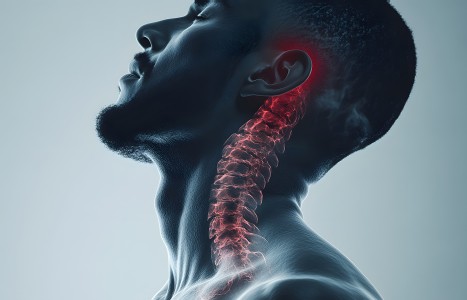Because they have yet to pass national legislation protecting the chiropractic profession, Japanese DCs are in a similar situation that U.S. DCs faced. We were fortunate enough to be able to pass chiropractic licensure state by state. The DCs in Japan must accomplish this nationally, which has proved to be an extremely difficult task. And in spite of their efforts, Japanese DCs are currently faced with two chiropractic professions.
Nutritional Status of Vitamin B12 and Vitamin D: Important Indicators of Cancer Risk
A recent article by Drs. A.S. Plant and G. Tisman, published in Nutrition and Cancer, highlights the emerging evidence that links suboptimal nutritional status of vitamin B12 and vitamin D with increased risk of cancer.1 Previous studies have shown that low serum levels of vitamin D (25-hydroxyvitamin D) are associated with a higher frequency of at least 17 different malignancies, including breast, colon, prostate, ovarian and other cancers.2-7 Vitamin B12 deficiency has been associated with an increased risk of breast cancer.8,9 In one study of postmenopausal women, low levels of vitamin B12 were associated with a 2.5 - 4.0 increased risk of breast cancer.10
The anticancer properties of vitamin D are reported to stem from its ability to bind to vitamin D receptors on the surface of cells (many tissues contain vitamin D receptors) and thereby, decrease the rate of cellular proliferation (cellular replication) and encourage cellular differentiation (maturation). Both of these influences reduce the risk that a cell will become malignant. Vitamin D also has been shown to exert antineoplastic influences on existing cancer cells, which maintain vitamin D receptors. Under experimental conditions, vitamin D has been able to slow the growth of cancer cells and encourage cellular differentiation (more mature-looking cells with less malignant properties). Several recent clinical trials have shown that high-dose vitamin D supplementation can slow the rise in PSA in prostate cancer patients and improve median survival when added to conventional therapies. Vitamin D also binds to receptors on immune cells, acting as an immune modulator.11-15
The anticancer properties of vitamin B12 are considered to be related to its involvement in cycling homocysteine to methionine. Methionine is then converted into S-adenosyl methionine (SAMe), which provides a methyl group to form the methylated nucleotides required for DNA synthesis. As cells replace themselves from one generation to the next, sufficient vitamin B12 and folic acid are required to enable the emerging cell to make sufficient and well-formed DNA. Even a marginal deficiency in vitamin B12 and/or folic acid can lead to hypomethylation of DNA. DNA hypomethylation makes the chromosomal linkages weaker and more susceptible to forming mutations linked to cancer. Many cancers have been linked to DNA hypomethlyation of oncogenes suppressor genes, which has been shown to be prevalent in patients with low levels of vitamin B12. Recent evidence suggests this appears to be especially critical in the prevention of breast cancer.8,9,10,16,17
Demand for Vitamin B12 and Vitamin D Increases With Age
The incidence of many cancers increases with advancing age. Although there are numerous reasons to explain this finding, one factor may be related to the fact that nutritional status of vitamin B12 and vitamin D tends to be reduced as we age, due to predictable age-related changes in the body's physiology. In the case of vitamin B12, 30 percent to 40 percent of elderly people suffer from gastritis, an inability to secrete adequate stomach acid, which impairs absorption of vitamin B12. Stomach acid secretions include intrinsic factor, which binds with vitamin B12 to facilitate its absorption into the bloodstream upon reaching the ileum of the small intestine. As such, the age-related decrease in stomach acid secretion results in reduced absorption of vitamin B12 as we age.18
In regard to vitamin D, as we age, our skin shows a reduced ability to synthesize vitamin D upon exposure to sunlight (ultraviolet radiation). The kidneys display a reduced ability to convert 25-hydroxyvitamin D into 1,25-dihydroxyvitamin D (calcitriol), which is the most potent form of vitamin D. As a result, our vitamin D status tends to decrease with age.19 Studies demonstrate that the frequency of serum vitamin D insufficiency (25-hydroxyvitamin D) is highest among the elderly. As much as 50 percent of the elderly population in North America may have blood levels of 25-hydroxyvitamin D below 75 nmol/L. This not only increases risk of osteoporosis and related fractures, but also may increase risk of certain cancers.20
Findings From the Plant and Tisman Study of Cancer Patients
In a study of 70 cancer patients, blood results showed that 72 percent of patients had blood levels of 25-hydroxyvitamin D below 75 nmol/L and 34 percent had blood levels of holotranscobalamin (HTCII) below 69 pg/ml. Holotranscobalamin is the metabolically active form of vitamin B12.1 This is an important point, as only 6 percent of this patient group showed low levels of serum vitamin B12 (normal = >300 pg/ml). Thus, serum levels of holotranscobalamin are considered a more accurate indicator of vitamin B12 status and cancer risk. The results of this study indicate that many cancer patients have low blood levels of vitamin D and/or vitamin B12 (HTCII), which may have made these individuals more susceptible to cancer development.1
Previous studies have shown that individuals with low serum levels of vitamin D (below 75 nmol/L) and/or hypomethylation of DNA, secondary to compromised nutritional status of folic acid and/or vitamin B12, are more susceptible to subsequent development of certain cancers.21-26 The findings of Plant and Tisman serve to support the correlation between suboptimal nutritional status of vitamin D and vitamin B12, and increased cancer risk.
Butterworth, et al., found the cervical dysplasia risk from human papillomavirus (HPV) to be limited to those with low folic acid status. Reversal of cervical dysplasia and bronchial dysplasia (two precancerous states) has been attained through the administration of folic acid and vitamin B12 supplementation.27
Based on the available evidence, it is advisable to include fasting vitamin D, holotranscobalamin and serum folic acid levels among the battery of blood tests performed to help determine a patient's health status and risk of future illness. Many health experts suggest that vitamin D levels (25-hydroxyvita-min D) should be in the range of 80 nmol/L to 130 nmol/L, and transcobalamin levels should be in the range of 70 pg/ml to 130 pg/ml. Vitamin B12 levels should exceed 300 pg/ml.1 To maintain these values throughout adult life, it may be wise for individuals to supplement each day with 400 IU to 1,000 IU of vitamin D (depending on their initial fasting levels) and a B-50 complex (containing 50 mcg of vitamin B12 and 400 mcg of folic acid). Studies suggest that a folic-acid fasting blood level of less than 4 ng/mL is the level at which chromosomal breaks occur more frequently, upon which cancer risk increases dramatically. Currently, 15 percent of the U.S. population has folic acid levels below 4 ng/mL.28 Low intake levels and serum levels of folic acid appear to especially increase risk of colon cancer. Some studies suggest that an intake of folic acid above 400 mcg per day may reduce risk of colon cancer by 31 percent.25,26,28
Dr. Tisman recommends supplementing cancer patients with 500 mcg to 1,000 mcg of vitamin B12 (orally), especially if they are undergoing chemotherapy, and 1,000 IU to 4,000 IU of vitamin D (orally). Monitoring of blood levels is necessary in these cases to ensure that HCTII blood levels are maintained between 70 pg/ml and 130 pg/ml, and that 25-hydroxyvitamin D levels do not exceed 200 nmol/L. Previous studies have shown that co-administration of vitamin B12 and folic acid with certain chemotherapy drugs (e.g., Alimta) reduced mucositis and diarrhea, which normally occur with these drugs. Vitamin B12 and folic acid play an important role in supporting the integrity of the intestinal lining. Higher doses of these nutrients are required when the body is under attack from chemotherapy agents, which can damage these tissues.1
References
- Plant AS, Tisman G. Frequency of combined deficiencies of vitamin D and holocobalamin in cancer patients. Nutr Cancer, 2006;56,2:143-8.
- Gorham ED, Garland FC, Garland CF. Sunlight and breast cancer incidence in the USSR. Int J Epidemiol, 1990;19:820-4.
- Garland CD, Comstock GW, Garland FC, et al. Serum 25-hydroxycitamin D and colon cancer: eight-year prospective study. Lancet, 1989;2:1176-8.
- Schwartz GG, Hulka BS. Is vitamin D deficiency a risk factor for prostate cancer? (Hypothesis). Anticancer Res, 1990;10:1307-11.
- Lefkowitz ES, Garland CF. Sunlight, vitamin D, and ovarian cancer mortality rates in US women. Int J Epidemiol, 1994;23:1133-6.
- Grant WB. An estimate of premature cancer mortality in the United States due to inadequate doses of solar ultraviolet-B radiation. Cancer, 2002;94:1867-75.
- Grant WB. Ecologic studies of solar UV-B radiation and cancer mortality rates. Recent Results Cancer Res, 2003;164:371-7.
- Herbert V. Methyl metabolism: epigenetics, genomics, proteomics. 2002 FASEB Summer Research Conference, Snowmass Village, CO.
- Herbert V. Genomics and proteomics 2001: controlling some of the DNS's, RNA's, and proteins which blueprint health, disease, and life span by controlling their methylation and demethylation. 2001 FASEB Summer Research Conference, Sexton River, VT.
- Wu K, Helzlsouer KJ, Comstock GW, et al. A prospective study of folate, B12, and pyridoxal 5-phosphate (B6) and breast cancer. Cancer Epidemiol Biomarkers Prev, 1999;8:209-17.
- Beer TM, Eilers KM, Garzotto M, et al. Weekly high-dose calcitriol and docetaxel in metastatic androgen-independent prostate cancer. J Clin Oncol, 2003;21:123-8.
- Feldman D, Zhao XY, Krishnan AV. Vitamin D and prostate cancer. Endocrinology, 2000;141:5-9.
- Van den Bemd GJ, Chang GT. Vitamin D and vitamin D analogs in cancer treatment. Curr Drug Targets, 2002;3:85-94.
- Mehta FG, Mehta RR. Vitamin D and cancer. J Nutr Biochem, 2002;13:252-64.
- Ylikomi T, Laaksi I, Lou YR, et al. Antiproliferative action of vitamin D. Vitam Horm, 2002;64:357-406.
- Feinberg AP, Vogelstein B. Hypomethylation distinguishes genes of some human cancers from their normal counterparts. Nature, 1983;301:89-92.
- Goelz SE, Vogelstein B, Hamilton SR, Feinberg AP. Hypomethylation of DNA from benign and malignant human colon neoplasms. Science, 1985;228:187-90.
- Herbert V. Vitamin B12: plant sources, requirements, and assay. Am J Clin Nutr, 1988;48:852-8.
- Webb AR, Kline L, Holick MF. Influence of season and latitude on the cutaneous synthesis of vitamin D3: exposure of winter sunlight in Boston and Edmonton will not promote vitamin D3 synthesis in human skin. J Clin Endocrinol Metab, 1988;67:373-8.
- MacLaughlin J, Holick MF. Aging decreases the capacity of human skin to produce vitamin D3. J Clin Invest, 1985;76:1536-8.
- Braun MM, Helzlsouer KJ, Hollis BW, Comstock GW. Colon cancer and serum vitamin D metabolite levels 10-17 years prior to diagnosis. Am J Epidemiol, 1995;142:608-11.
- Tangrea J, Helzlsouer KJ, Pietinen P, et al. Serum levels of vitamin D metabolites and the subsequent risk of colon and rectal cancer in Finnish men. Cancer Causes Control, 1997;8:615-25.
- Feskanich D, Ma J, Fuchs CS, et al. Plasma vitamin D metabolites and risk of colorectal cancer in women. Cancer Epidemiol Biomarkers Prev, 2004;13:1502-8.
- Wactawski-Wende J, Kotchen JM, Anderson GL, et al. Calcium plus vitamin D and the risk of colorectal cancer. N Engl J Med, 2006;354:684-96.
- Giovannucci E, Stampfer MJ, Colditz GA, et al. Methionine and alcohol intake and risk of colorectal adenoma. J Natl Cancer Inst, 1993;85:875-84.
- Giovannucci E, Rimm EB, Ascherio A, et al. Alcohol, low-methionine low-folate diets, and risks of colon cancer in men. J Natl Cancer Inst, 1995;87:265-73.
- Lashner BA, Heidenreich PA, Su GL, et al. Effect of folate supplementation on the incidence of dysplasia and cancer in chronic ulcerative colitis. A case-control study. Gastroenteral, 1989;97:255-9.
- Ames BA. Ames agrees with mom's advice: eat your fruit and vegetables. JAMA, 1995;273:1077-8.


